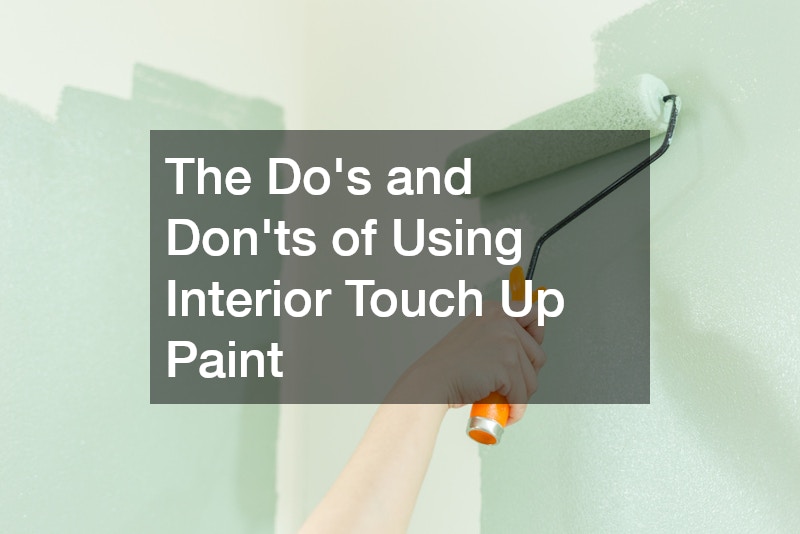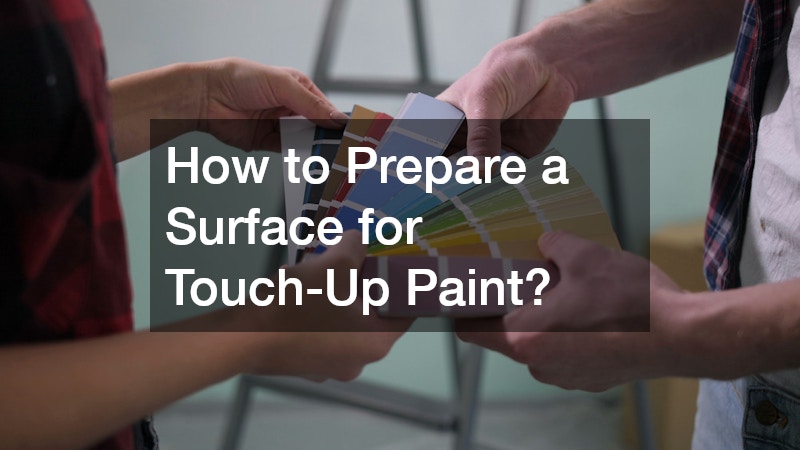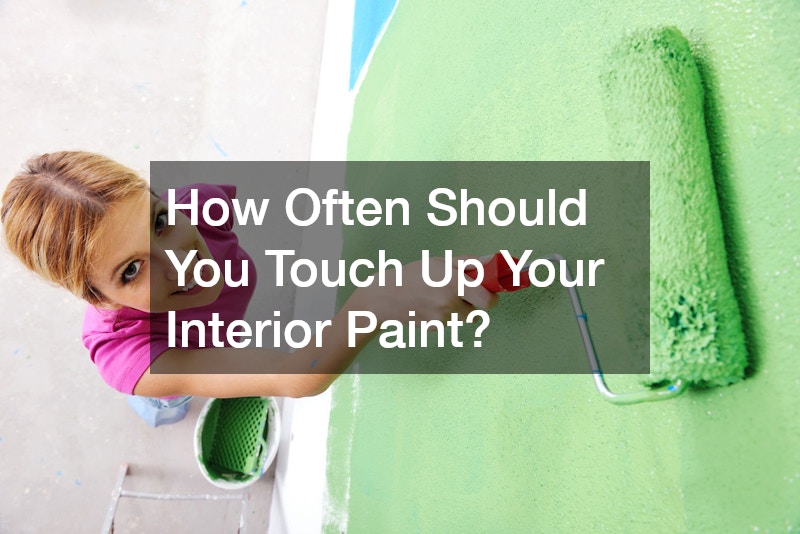
The Dos and Donts of Using Interior Touch Up Paint

Maintaining a home’s interior aesthetics involves numerous tasks, and knowing how to use interior touch up paint effectively is a key skill for any homeowner. Touch up paint is not merely about improving the visual appeal of a room; it also serves a protective function, helping to safeguard walls from everyday damage, scuffs, and gradual wear over time. From minor nicks caused by moving furniture to blemishes left by picture hooks, these imperfections can accumulate and detract from the overall look of your living spaces. By applying the correct techniques, selecting quality paint that matches the existing finish, and using the right tools, homeowners can restore their walls to like-new condition. This attention to detail not only keeps interiors looking fresh but also extends the life of wall surfaces, ensuring a clean, polished appearance for years to come, whether in a standard house or a high-end custom home.
1. What is Interior Touch Up Paint and Why is it Important?

Interior touch up paint is a specialized paint used for smaller areas that need refreshing due to scuff marks, chips, or general wear. While it might seem like a minor fix, having the ability to touch up walls properly can significantly impact the overall appearance of your home. For custom homes, where every detail matters, maintaining the flawless finish is particularly crucial.
When selling real estate or listing a property for sale, the condition of the interior walls can influence a potential buyer’s perception. Touch-ups can make a significant difference, creating a more polished and well-kept look. Home builders understand the importance of details; they often use interior touch up paint to correct minor flaws that can detract from the beauty of the space.
Furthermore, the right paint can protect the walls from further damage, acting as a guard against minor scratches and environmental factors. This is particularly important in homes with small children or pets who may inadvertently blemish walls. Understanding the nuances of touch-up paint also assists builders in selling not just a house, but a home with lasting value that appeals to buyers who may be purchasing land to build on or evaluating multiple pieces of land for development.
2. How to Choose the Right Type of Interior Touch Up Paint?
Selecting the correct interior touch up paint begins with understanding the existing paint on your walls. If you’re in a custom home, the paint used may not be standard, requiring a specific type or mix. For general touch-ups, matching the original paint type and finish, whether flat, satin, or gloss, is imperative to achieving seamless repair.
Visiting a paint store with a sample of your existing wall color can provide valuable assistance in finding the correct match. Many stores offer digital tools and swatches to help identify the perfect shade. Consultation with professionals, such as home builders or real estate experts, can also provide insights into the best brands and types to use for your specific needs.
Understanding the environment and the surface you’re painting is equally important. For homes experiencing high traffic areas or requiring regular maintenance, certain durable paint options offer long-lasting solutions. Equally, selecting eco-friendly paints can provide health benefits without compromising on quality, which is vital when considering long-term living spaces and protecting your investment, whether it’s in a custom home or a property for sale.
3. What Tools and Materials are Required for Touch-Up Painting?
Proper tools are essential to achieve an impeccable finish when using interior touch up paint. Commonly required tools include a small brush, a roller, and painting tape to protect adjacent areas. A keen home builder or electrician might already own these tools, but they are also readily available at hardware stores for those who need them.
Having the right materials extends beyond just paint and brushes. A quality primer may be necessary for areas displaying significant color change, ensuring the new paint adheres properly. Additionally, spackle and sandpaper can be vital in preparing surfaces marred by larger imperfections before applying the touch-up paint.
For seamless application, consider tools such as a small spray bottle that can be used to lightly mist the area and reduce brush marks. Special additives might also be used with some paint types to reduce drying time and improve the final look. Being prepared with these tools ensures a smooth and trouble-free painting process, much like proper preparation benefits deck construction or other detailed home improvement projects.
4. How to Match the Existing Wall Color Perfectly?

Perfectly matching existing wall colors with interior touch up paint is both an art and a science. Starting by checking any leftover paint from the initial job is the most straightforward approach. If you don’t have the original paint can, a paint chip the size of a dime can be cut from an inconspicuous area to take to a hardware store for color matching.
Many paint stores now offer digital color matching services, where a photo of your wall can be processed to find the closest available shade. In custom homes, these services are invaluable, as bespoke features often require unique colors not found on standard palettes. Technology such as this has greatly simplified the matching process, ensuring color continuity across large and small paint jobs alike.
When doing touch-ups, consider the lighting in the room as well. Different light sources can affect how the paint looks once applied, so what seems like a perfect match in the store could appear slightly different at home. Testing a small patch before committing to the full touch-up provides a fail-safe way to ensure accuracy.
5. Can You Use Leftover Paint for Touch-Ups and How to Store It?
Utilizing leftover paint from the original project is a smart and economical choice for touch-ups. If properly stored, leftover paint retains its qualities and can seamlessly blend with existing wall paint. Store unused paint in a cool, dry place, tightly sealed to prevent drying out or color degradation.
For those purchasing land or arranging a moving service into a new home, consider labeling cans with the specific rooms they were used in. This small step can save time when you need to locate the exact paint color and type for future touch-ups. Proper labeling also aids real estate professionals in showcasing homes, ensuring touch-ups align with existing colors when preparing a property for sale.
If the paint has been stored for an extended period, ensure thorough mixing before application. Over time, paint can settle, causing separation that affects consistency and finish. A paint stick or mechanical mixer will aid in re-homogenizing the leftover paint effectively.
6. What Are Common Mistakes to Avoid in Touch-Up Painting?
One of the most common mistakes made during touch-ups is not preparing the surface adequately. Skipping steps like cleaning or priming can result in uneven or poor adherence of the new paint. Without this crucial step, even the finest interior touch up paint cannot provide the desired outcome.
Another frequent error is attempting to perform touch-ups without the necessary tools. Using incorrect brushes or inadequate amounts of paint can lead to visible differences in texture and finish. It’s advisable to invest in quality tools which can also serve you well for future projects.
Tackling touch-up painting without accounting for the existing ambient conditions is also a mistake. Paints dry differently based on humidity and temperature, factors which should be considered for optimal results. Such details are familiar to a home builder or a seasoned painter, who understand how these environment changes can affect the final product.
7. How to Prepare a Surface for Touch-Up Paint?

Before applying interior touch up paint, proper surface preparation is crucial for an even and durable finish. Begin by cleaning the area with a mild detergent to remove any dust, dirt, or grime. A clean surface ensures that the paint adheres effectively and covers the targeted area smoothly.
If the wall has dents or holes, apply spackle and let it dry before sanding it to a smooth finish. This step is particularly important in the case of custom homes, where flawless finishes are expected. Preparation helps in maintaining the professional appearance expected in high-value real estate.
Once the surface is clean and smooth, priming the area might be necessary. A primer aids in bonding the paint to the wall and ensures that the touch-up seamlessly integrates with the rest of the wall surface. Especially if you are using leftover paint from a long-completed deck construction, primer can be the bridge that ensures proper adhesion and an even look.
8. Should You Use a Brush, Roller, or Spray for Touch-Ups?
The choice of tool for interior touch-up painting should reflect the size and type of the repair needed. For small areas or fine details, a brush is most effective, providing control and precision. Brushes are especially useful for minor scuffs or edging tasks, typically encountered with regular real estate maintenance.
For broader touch-up tasks, a small roller can cover more area with a consistent texture. This approach is particularly useful in newly built custom homes where large wall areas may require uniform treatment to maintain aesthetic consistency during the final inspections. Rollers also minimize visible brush strokes, offering a more seamless result.
In certain cases, using a spray can be advantageous for achieving a flawless finish, especially on textured surfaces or when there’s a need to blend with a previous spray-applied paint. Although utilizing spray equipment requires more preparation and care, it provides an excellent outcome for intricate projects, such as wall sections near detailed architectural elements.
9. How to Apply Touch Up Paint for Seamless Results?
Applying interior touch-up paint is about finesse and careful blending to ensure a seamless repair. After selecting the correct tool, apply the paint in thin, even layers, slowly building up coverage. Avoid overloading the brush or roller, as this can lead to drips and uneven texture.
Blend the new paint softly into the existing paint using light, feathering strokes towards the surrounding area. This technique helps eliminate hard edges and ensures that touched-up sections smoothly integrate with the rest of the wall. In situations involving professional home builders, this method is crucial for maintaining the premium appearance expected in high-end properties.
Upon completing the touch-up, allow adequate time for the paint to cure, avoiding disturbances in the interim. Although it might be tempting to touch the surface, patience ensures the best final result. Check the area from different angles to confirm seamless integration with the surrounding wall surface after the paint has fully cured.
10. How Often Should You Touch Up Your Interior Paint?

The frequency of touch-up painting depends on the wear and tear each room experiences. High-traffic areas like hallways and children’s bedrooms often need more frequent attention. In these spaces, using durable finishes can reduce the need for constant maintenance over time.
For rooms with lower traffic, such as guest bedrooms or offices, touch-ups may be less frequent, aligning with scheduled refreshes or redecorations. Consulting with professionals, such as interior designers involved in deck construction or bespoke renovations, can offer additional insights regarding optimal maintenance schedules.
To keep a home looking fresh, plan for regular assessments of wall conditions, similar to other home maintenance tasks. The need for touch-ups can also vary by the season; for instance, drier winter months might exacerbate the appearance of cracks, necessitating moderate repair. Consistency in touch-ups not only sustains aesthetics but can also enhance property value should a homeowner decide to list the property for sale, or even when applying roof coatings to improve curb appeal.
Mastering the do’s and don’ts of using interior touch up paint ensures your home maintains its beauty and value. With the right preparation, tools, and techniques, touch-up painting becomes an efficient task that extends the longevity of your interior walls. Whether it’s correcting minor blemishes or performing a more substantial fix, thoughtful attention to detail is paramount. The roles of professionals such as home builders and electricians intersect with touch-up paint when creating premium environments in both new constructions and renovations. A well-maintained interior contributes not only to immediate visual appeal but also supports lasting property value in the competitive real estate market. Ultimately, knowing how to correctly implement touch-up paint is an invaluable skill for any homeowner or prospective buyer. Whether you’re enhancing the charm of a custom home, preparing a property for sale, or finalizing finishing touches before a moving service arrives, using interior touch up paint proficiently assures a pristine impression. By prioritizing quality and consistency, any home can maintain its allure and functionality in equal measure. Remember, a thoughtfully managed home is an investment in both your comfort and its future value.